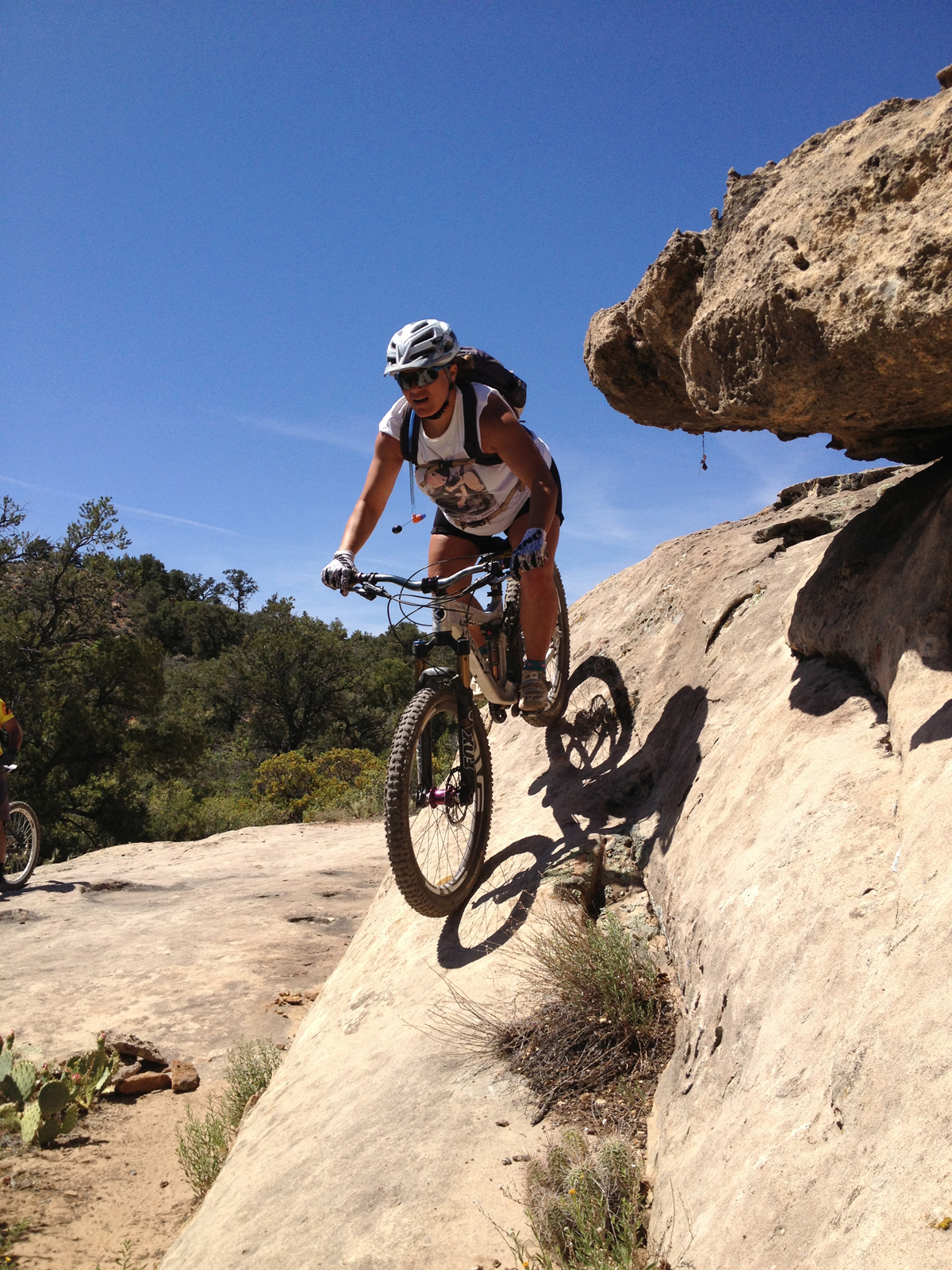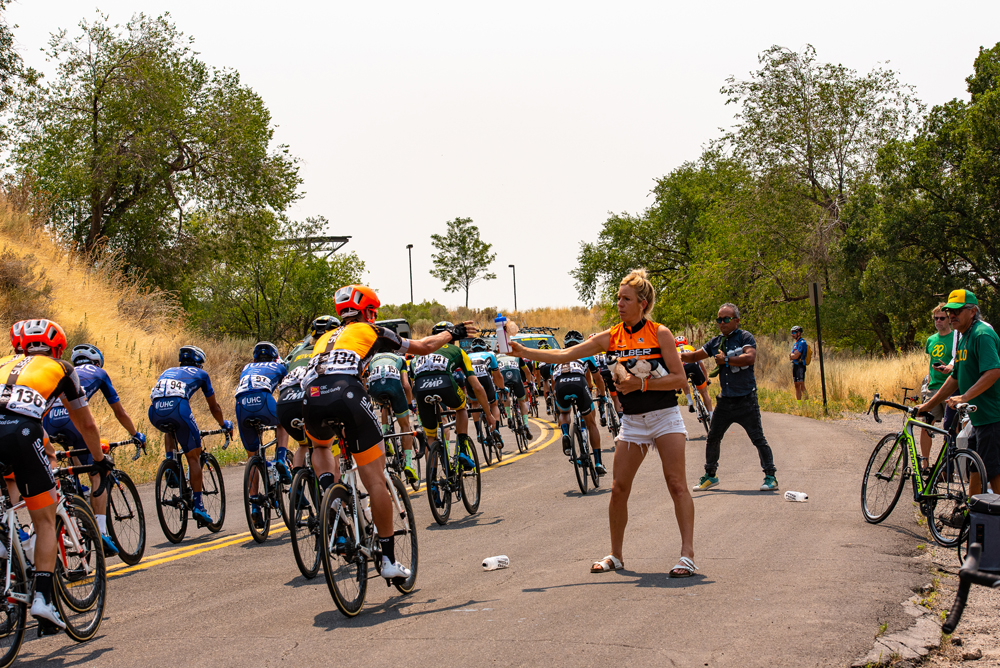By Tara McKee — It is cause for celebration: you just found out you’re pregnant! There are so many things to consider over the next few months, and one that cyclists have to consider is should I continue to ride my bike as exercise or transportation during the pregnancy?
The short and easy answer is that most women with a healthy pregnancy do benefit with at least 30 minutes of exercise a day. Cycling can be a great exercise for most of the pregnancy for many expecting women. The bike supports a pregnant woman’s weight and places less stress on the body. As the abdomen grows, the center of gravity shifts, and it may become harder to reach the handlebars, so balance becomes an issue and it may be a good time to put the bike on a stationary trainer.

How much cycling can you continue to do while pregnant? The short answer is that it depends on the individual woman, her level of fitness and health issues. At the first appointment, talk to your doctor and get their advice. Women who have high-risk pregnancies (like I did) may not be able to cycle at all or may have to settle for riding on a stationary bike during pregnancy. If blessed with a nice, normal pregnancy, you should be able to ride your bike or continue an exercise program to some degree.
DJ Morisette, co-owner of Over the Edge Sports in Hurricane, Utah continued to mountain bike throughout most of her pregnancy (even past 8 months). Originally she had also been running in the early months of her pregnancy, but found the “bouncing and jiggling” of running bothered her. “The bike was my saving grace,” she said. She had talked about her activity with her midwife and because mountain biking was something her body was used to, it was fine to continue. As DJ’s pregnancy progressed, her bike was adapted to help her ride comfortably. She also made other adjustments later in the pregnancy, noting it became harder to ride up hills and she had to make sure she was balanced as she rode through turns. DJ has some practical advice for other women: “Being active is important for both you and your baby. But it’s also important to listen to your body and keep it safe. If you feel discomfort, you need to stop.”
General Guidelines for Cycling While Pregnant:
- During pregnancy, a woman will need even more fluids as her blood volume doubles during this time. Dehydration can lead to headaches, dizziness, fainting and even premature labor. Avoid riding in hot weather and carry water with you at all times, drinking often.
- Do all you can to be safe. Wear a helmet and make sure the bike and its components are in good working order: check the brakes and make sure the bike has reflectors and working lights if needed.
- The American Congress of Obstetricians and Gynecologists (ACOG) and American College of Sport Medicine (ACSM) are no longer recommending having pregnant women keep their heart rates at a certain level, but have them focus on their rate of perceived exertion (RPE). Generally, if you can carry on a conversation, you’re not overdoing it. That’s probably a 60-80% aerobic capacity for most women. Well-trained athletes may be able to exceed this, especially if they have their doctor’s blessing. It’s important to avoid pushing yourself to the point of exhaustion.
- If you are very active, assess your diet to make sure you are getting enough calories and protein.
- Pregnant women may feel more comfortable and secure if you switching clip-less pedals out for platform pedals and athletic shoes.
- If you’re riding alone, always take a cell phone with you…just in case.
- You may not want to ride too far from home just in case you experience some unpleasant pregnancy symptoms during your ride such as dizziness, vomiting, muscle cramping or extreme fatigue. A “figure 8” loop ride may work well, riding two (or more) small loops from your home.
- During your pregnancy, avoid high traffic routes on your commute or road cycling rides both to minimize risk from unpredictable motorists and to avoid breathing in pollutants from car exhaust.
First Trimester Cycling:
During the first trimester, a woman’s pelvis encases and protects the uterus, so most women can safely ride without problems at this time. Even so, talk to the doctor about individual risks for cycling. Women who are carrying multiple babies, diabetics, and women with high blood pressure are at a higher risk for falls.
- Road cyclists may want to consider a switch: using a bike with a more upright position, a more comfortable seat and wider, hybrid-style tires. If you do keep your road bike, alter the seat and handlebars to give yourself a more upright position and take the strain off your back.
- Take precautions to avoid falls and crashes. It’s the time to drop out of the competitive cycling group rides as the pace-lines and a push to go faster can be dangerous at this time. Avoid fast hill descents.
- Pay attention as to your sense of balance as the growing uterus can change your center of gravity and it can be a challenge to even reach the handlebars. Avoid riding in conditions where your chances of a fall are significantly higher such as when the streets are wet and slick or the single-track is too technical. Avoid ride routes with sharp turns and rough terrain.
Second Trimester:
If a woman is blessed with a normal, healthy pregnancy, there are no hard and fast rules from obstetricians about riding a bike in the middle trimester. It is true that the uterus is not as protected during this time, so it is important to make sure one is well balanced on the bicycle and avoid more risky rides. Women who have placenta previa should not ride their bicycles for the remainder of the pregnancy as any bouncing can induce bleeding.
- If women have not been cycling since the beginning of their pregnancy, do not start cycling during the 2nd trimester, as a sense of balance is often too compromised.
- This is a good time to enjoy pleasant easy-going bike rides with your good friends or your husband.
- Continue to adjust the fit of the bike to keep an upright position and make it easier to breathe. This can often be done by raising the handlebars and lowering the seat. Move the pedals so the knees don’t open too far.
- After the first trimester, pulling a bike trailer with a toddler or preschooler inside may be too much of a strain. Let someone else do that.
- Mountain biking can be risky as falls are common on technical trails. If in doubt, walk the bike down a twisty downhill or through and over large obstacles.
- Many women choose to move from outdoor to indoor cycling during this trimester. Let the spin instructor know about your pregnancy and don’t feel tempted to over-do the workout or even complete the full hour. Do not work out to the point of exhaustion.
Third Trimester
For women who have been cycling throughout the pregnancy, it is fine to continue to ride in the third trimester if she is comfortable doing so. As a form of exercise, cycling is a great, low-impact activity that gives the cardiovascular system a workout while sparing the hips, knees and feet.
- For women who continue to ride during the last few months of pregnancy, continue to adjust the bike fit as needed. Some women prefer using a wider saddle at this time. If you have access to a recumbent bike, you may find they are more comfortable to ride during the last trimester as they support the back quite nicely and offer a wider seat.
- Choose ride routes that are predominately flat and don’t take you far from home. You may wish to really shorten your rides during this trimester.
- If, during the last trimester, if it is becoming too much of a challenge to ride outside, this is really the time to consider riding a stationary bike inside.
- Stop riding when your body tells you or when you’ve decided it’s not fun anymore.
Post-Partum Rides
Technically, cycling is a safe activity after giving birth. Professional cyclists such as Olympian Kristin Armstrong were back on the bike and training within a month after giving birth. But sitting on the saddle can be sore after giving birth, especially if one has had stitches. A new mother may be more mentally ready to ride than physically able to. Later on, as new moms become more rested; they often develop a strong wish to do something active all by themselves, freedom for 30-60 minutes at a time. Cycling can be the perfect activity.
Some things to keep in mind:
- Nerve damage which can occur during labor can take 4-6 months to heal. Adjust the fit on the bike to avoid rubbing any sore spots and gradually ease into cycling as your body allows. Change to a different bike seat if needed.
- This is not the time to train on a time-trial bike. Triathletes will be more comfortable training with a road bike at this time, so as to avoid leaning too far forward.
- New mothers may find it easier to get in a workout with their bike indoors on a trainer at home while the baby naps in the other room. As you feel stronger, you can gradually add intervals and sprints back into the workouts.
May you enjoy a fit, active and healthy pregnancy!
Mothers-to-be may enjoy a new book just released from Velopress titled, Fit & Healthy Pregnancy: How to Stay Strong and in Shape for You and Your Baby by Kristina Pinto and Rachel Kramer, MD.









It’s safe to sit on a bike during pregnancy with just the right care. However, you have to make sure that you opt for a step-through bike instead of a step-over model.
Some people may find it more preferable to ride a bike with a step-through frame because they typically have a more upright position or because they’d be easier to mount during late-term pregnancy, but it’s hardly a necessity. I’ve known several women who have ridden through pregnancy without having to ride a different bicycle than usual.
Comments are closed.